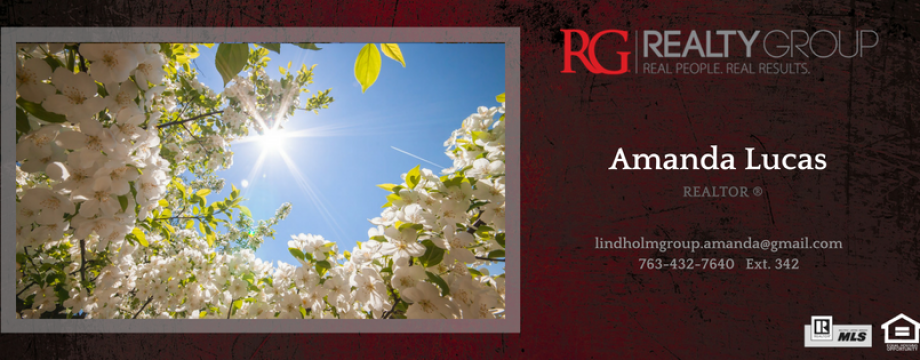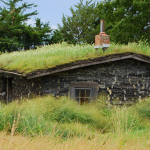The New Territories and the Frontier
It is a brave new world…for American home designs! For this installment, we’re going to focus on the New Territories and the Frontier and the home styles that were developed there.
First of all, the time frame we’re exploring this time is approximately the early to mid 1800’s through what is referred to as the Gilded Age. This will bring us up through the Civil War and end just before the turn of the 20th Century. We’ll save the modern stuff for another day!
The New Territories and the Frontier is a time of exploration and expansion in the United States. The Revolution was in the not too distant past and America has come through the war of 1812 still independent. Now trouble at the southern border begins to brew as the Mexican War approaches in the 1830s. Trade is flourishing in our port cities like New York City, Boston, Savannah, and New Orleans. Americans are spreading out from one coast to another and everywhere in between. The Great Plains will become home to many farmers and still is today. Many of those homes still stand. If you live in a a Plains state or one that borders it, you will recognize one of the home styles we’ll get into today. Many Midwestern towns and cities still have homes in use from this area…amazing!
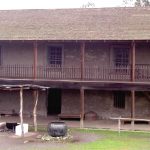
Monterey Colonial
The Monterey
This style of American home was very prominent in California, Texas, and the whole of the American Southwest. This Spanish-inspired design features the classic red tile hip-style roof. As far as describing it, the Monterey is cross between the Spanish Colonial and the New England Colonial. Clear as mud? Good!
The style is characterized by two stories, 360 degree surrounding porches on both levels, and adobe walls with a stucco or brick exterior. This style is very reminiscent of the barracks buildings in the frontier military forts of the 1800’s. That may also help as a visual…so will will the picture at right.
Spanish Mission
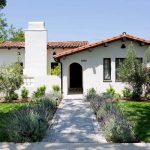
Modern Spanish Mission Home
Unlike the Monterey, most readers will need no help picturing what the Spanish Mission design looks like. It is a classic, and it isn’t even our’s!
Despite their sometimes ornate and complicated exteriors, Spanish Mission style homes and buildings are simple structures. They are described as having a “lack of frills” but they certainly are not boring structures by any means. These all sound like contradictions, I realize, but bear with me as we flush this out.
Spanish Mission architecture’s most iconic feature are the arched windows and doorways. This classic feature is the easiest one to pick out and say, “oh yeah, definitely Spanish Mission.” The red tile roof is also a giveaway. This type of home will have a porch or portico on the first level. Inside the home, the walls are thick and often covered with stucco or plaster. Exposed wood beams help to accentuate the ceiling space and create a rustic look.
This type of American home is found in California and the American Southwest and furthermore is still very popular today.
Cajun (Creole) Cottage
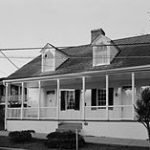
Cajun (Creole) Cottage
Alright, let’s move to the Gulf Coast. Picture yourself on the bayous of Louisiana and you’re going to build a new home. It is hot and muggy- understatement of the year. The ground is damp from intermittent flooding. You catch a brief breeze blowing in from the coast. It hits you- you need to build a home that keeps you dry and can capture that merciful breeze.
Welcome to the Cajun (also known as Creole) Cottage! The first of these homes were built using a wood pole frame that was covered in palmetto fronds. The posts were put into the ground for stability. Cajun Cottages were elevated off of the ground for two reasons- water and insects. I’d also add snakes and gators to that list, but that is just me! Louisiana’s topography is such that it is very prone to flooding from hurricanes and heavy rains and early on people began getting themselves up off the ground to avoid the seasonal floods that come and go.
These are also called “shotgun houses” for the way the doorways aligned to create the airflow homeowners needed before air conditioning. If all of the doors were open, you’d be able to see all the way through the cottage.
Creole Townhome
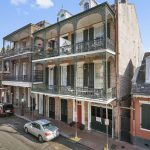
Creole Townhome
Ok, we’re still in Louisiana. Continuing our journey, we make the trip into New Orleans. No, it isn’t Mardi Gras right now.
Naturally we head directly to the French Quarter to see our next American home- the Creole Townhome. You might think that this is basically what we just talked about for the Cajun Cottage. It is similar but there are some marked differences.
The Creole Townhome is a three to four story building with balconies. Ok, now think of Mardi Gras and people packing the balconies to watch the celebration. Now you have it in mind! Normally the roofs are either slate or ceramic tile and the exteriors can vary. The interesting piece is how each of the floors is used. While not elevated like their cottage counterparts, the first floor is used for commercial ventures and the upper floors are living areas. This is seen in Europe quite a bit and has it’s roots in Roman culture where the shop owner would live upstairs and work on the first floor.
The Log Cabin
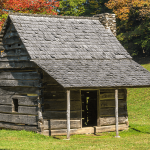
Log Home
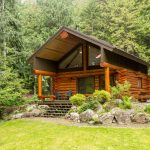
Log Cabin
This quintessential American home isn’t even from the United States. Too soon? Not what you expected? Good! The Log Cabin originated in Europe, mostly in the Scandinavian countries, Russia, and the Baltic nations. As immigrants began to come over to America, they brought their know-how with them. This included their architectural and construction skills.
The Log Cabin was made from materials that were readily available. Logs provided excellent insulation- did you know brand new log homes are still being built today? Check this out, you won’t believe some of these.
Log Cabins (or homes) are found across the United States.
So is it a log cabin or a log home? Do you know what the difference is? It’s all in the logs. A log house has hewn logs and a log cabin’s are not. Let’s say the word “log” again, just in case we didn’t do it enough already- LOG!
Sod House
Not sure what a Sod House is? Little House on the Prairie. Did that help?
Sod Houses are made of sod bricks cut from the prairie grasslands. They were built to stand up to the weather of the prairies which can be temperamental at best. Their front doors always faced south which, in an area of flat and rather featureless land, you always knew which way you were heading when you approached one of these houses.
You can visit a real Sod house here in Minnesota in Sanborn. Sanborn is directly south of Redwood Falls approximately where Highways 71 and 14 meet. There you can see the real deal and also see the tools that settlers devised to harvest sod. They were geniuses!
The American Farmhouse
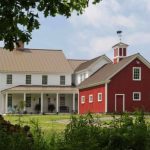
American Farmhouse
Our final American Home for this installment is the American Farmhouse. While these homes seem to harken back to a simpler time, they were feats of engineering in their day.
A new way of building a home began with the Farmhouse that was called the Balloon Frame. This trend began overseas in Scandinavia and therefore no one is able to pinpoint exactly when it came into use in the United States. It is certain that the construction style came in through Chicago and exploded on the US prairies.
These homes, because of the new building design, were easy and inexpensive to construct. They were built in the shape of a “T” or a “L” and featured large, open porches so the owners could enjoy the evening breeze.
Many Farmhouses are still in existence and use today! They are consequently the oldest homes on a city block in suburban Minnesota. In fact, I’m aware of at least three “homesteads” in my town of Forest Lake…in the southwest quad alone!
For Next Time
Thank you for taking this trip through the New Territories with me! My next “episode” will cover a very broad range of styles ranging from the Gilded Age all the way up through the end of World War I…so hold on to your hats!
As always if you have any real estate questions, want to buy or sell, know someone who does…just let me know! You can also sign up at my new home valuation website and receive a monthly update on your home’s value at Homebot. It is quick, easy, and will even tell you how much you could charge for an Airbnb!
Happy reading!

